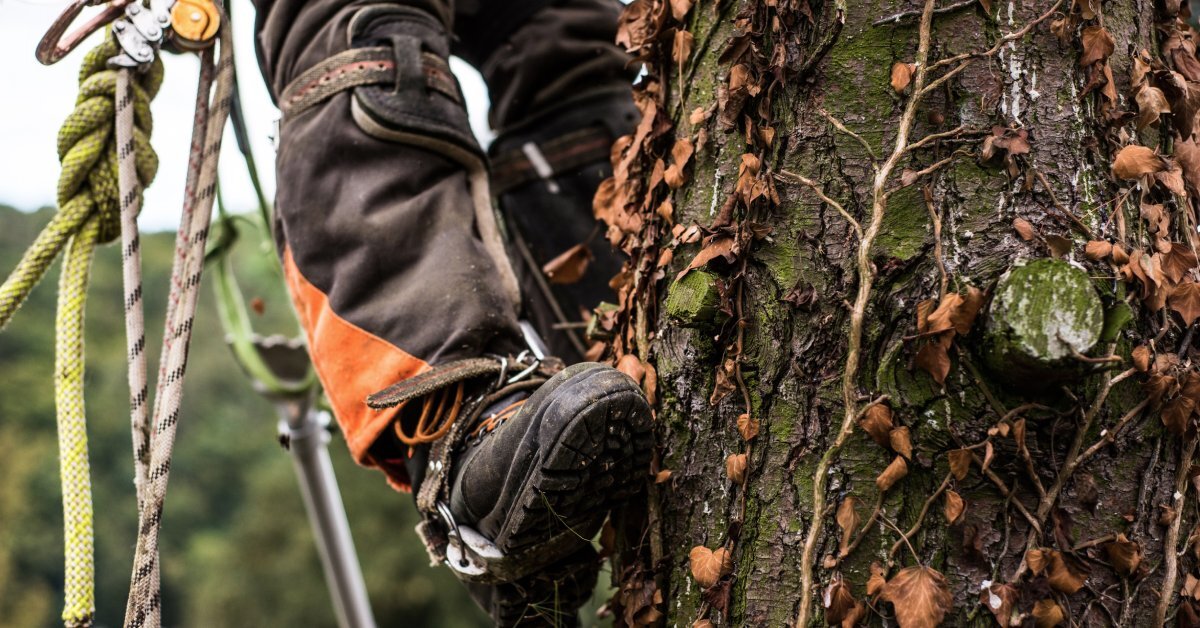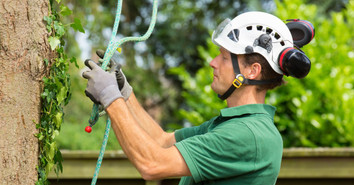Have you ever noticed how a skilled arborist makes complex tree removal look effortless? Behind every smooth rigging operation lies a fundamental force that determines success or failure: friction. Understanding how friction works in tree rigging systems can mean the difference between a controlled, safe operation and a potentially dangerous situation.
Friction plays a crucial role in every aspect of tree rigging, from controlling load descent to ensuring proper rope grip on hardware. Whether you’re managing heavy limb removals or executing precise canopy work, mastering friction principles will elevate your rigging game and keep you safer on the job.
This guide explores the role of friction in tree rigging systems, from basic physics to practical applications that you can implement immediately in your operations.
What Is Friction in Tree Rigging?
Friction is the resistance force that occurs when two surfaces interact during rigging operations. In tree work, friction arises whenever rope moves across pulleys, through friction devices, or around anchor points.
Think of friction as your invisible partner in every rigging setup. When you lower a heavy branch using a friction hitch or control descent speed through a mechanical device, you’re harnessing friction to manage forces that would otherwise be impossible to control manually.
The amount of friction generated depends on several factors, including surface materials, contact pressure, rope diameter, and the angle of wraparound devices. Understanding these variables allows you to predict and manipulate friction levels for optimal performance.
How Does Friction Control Load Movement?
Friction serves as a primary tool for controlling load movement during rigging operations. When properly applied, friction transforms potentially dangerous free-falling loads into manageable, controlled descents.
The key is to create enough friction to slow descent while maintaining smooth operation. Too little friction results in runaway loads that can damage property or injure workers, while too much friction creates excessive heat, premature rope wear, and potential equipment failure.
Mechanical advantage systems rely heavily on friction principles. When you use a block and tackle setup, for instance, friction at each pulley point affects overall system efficiency. Quality pulleys with proper bearings minimize unwanted friction, while friction hitches and belay devices maximize it where needed for better control.

Which Factors Affect Friction Levels?
Several critical factors determine the friction levels in your rigging system. Understanding these variables allows you to adjust your setup for optimal performance.
Surface texture plays a major role in friction generation. Rougher surfaces create more friction than smooth ones. This explains why certain arborist rigging rope designs feature textured sheaths for better grip in friction devices.
Contact pressure directly influences friction levels. Tighter wraps around anchor points or more tension through friction devices increases resistance. However, excessive pressure can damage equipment or create dangerous heat buildup.
Material composition also affects friction characteristics. Different rope materials interact differently with hardware surfaces. For example, nylon ropes behave differently from polyester when running through the same friction device.
The angle of wrap around pulleys, bollards, or natural anchors noticeably impacts friction levels. Each additional wrap increases resistance following the capstan equation principles.
Environmental conditions also matter. Wet conditions typically reduce friction between rope and hardware, while debris or sap can create unpredictable friction changes during operations.
When Should You Increase or Decrease Friction?
Knowing when to adjust friction levels separates experienced riggers from beginners. Different situations require different friction management strategies.
Arborists should increase friction when controlling heavy loads that exceed manual holding capacity and when working with smooth or slippery rope materials. Operating in wet conditions that reduce natural grip, needing precise control for delicate positioning work, and managing loads near valuable property or sensitive areas also call for friction increases.
A friction decrease is necessary when rope drag impedes efficient load movement or excessive heat builds up in friction devices. It is also important when system efficiency becomes unacceptably low or when rope wear accelerates due to high friction surfaces.
The goal involves finding the sweet spot where arborists can maintain adequate control without creating unnecessary resistance or equipment stress. This balance requires experience and careful attention to system feedback during operations.
What Types of Friction Devices Work Best?
Different friction devices excel in specific rigging scenarios. Selecting the right device for the application ensures optimal performance and safety.
Friction hitches like the Prusik, VT, or Distel provide adjustable friction that responds to load changes. These hitches work exceptionally well for controlled lowering operations where you need variable resistance.
Mechanical friction devices, such as figure-8 descenders, tubes, or plates, offer consistent friction levels with easy adjustment capabilities. These devices handle repeated use better than hitches and provide more predictable performance.
Capstan-style devices, including windlasses or bollards, create friction through multiple wraps of rope. These systems are ideal for extremely heavy loads but require careful attention to prevent rope override or jamming.
Integrated rigging systems combine pulleys with built-in friction controls, offering the convenience of mechanical advantage with variable resistance in single devices.
Each device type has optimal applications based on load requirements, control needs, and operational conditions. Many professional riggers carry multiple friction device types to handle various scenarios effectively.

How Can You Optimize Friction for Safety?
Safety optimization requires balancing adequate control with equipment longevity. Proper friction management prevents accidents while extending gear life. Start by matching the friction devices to the load requirements. Oversized devices often provide better heat dissipation and longer service life compared to minimal-capacity options. However, excessively large devices can create unwanted bulk and complexity.
Regular equipment inspection becomes critical when friction devices experience heavy use. Look for signs of excessive wear, heat damage, or deformation that could indicate friction overload. Replace damaged equipment immediately rather than risk failure during operations.
Temperature management also prevents equipment failure and maintains consistent performance. Allow friction devices to cool between heavy operations, and consider rotating multiple devices during extended work sessions to evenly distribute wear.
Implementing proper techniques reduces unnecessary friction while maintaining adequate control. Smooth, steady movements through friction devices prevent jerky loading that can damage equipment or create unpredictable resistance changes.
Understanding your equipment’s limitations helps you stay within safe operating parameters. Every friction device has maximum load ratings and heat dissipation capabilities that should never be exceeded.
Taking Control of Friction in Your Operations
Mastering friction principles transforms your rigging capabilities from basic to professional level. Remember that friction works as both friend and enemy in rigging systems. Harness it properly, and you gain precise control over even the heaviest loads. Ignore it, and you risk equipment failure, property damage, or personal injury.
Start implementing these friction principles in your next tree rigging job. Pay attention to how different devices, techniques, and conditions affect your system’s performance. With practice, friction management becomes intuitive, allowing you to focus on the bigger picture of safe, efficient tree work.
Ready to upgrade your rigging setup? Explore our selection at Monarch Rope and invest in quality friction devices that match your operational needs.

